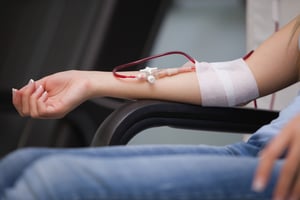5 Ways Huddles Can Benefit Your Dialysis Clinic
 Football fans probably are very familiar with the concept of a team huddle and its role in a successful game. Although your dialysis clinic isn’t a football field, huddles are key to improving and sustaining quality care. Today, we’ll give a quick definition of a huddle, and look at five ways huddles can benefit your dialysis clinic.
Football fans probably are very familiar with the concept of a team huddle and its role in a successful game. Although your dialysis clinic isn’t a football field, huddles are key to improving and sustaining quality care. Today, we’ll give a quick definition of a huddle, and look at five ways huddles can benefit your dialysis clinic.
What is a huddle?
Unlike a long timeout in football, clinical huddles are quick meetings where hemodialysis staff share crucial information about patient care. Huddles should last 5 to 15 minutes, occurring at the same place and at the same time each day. To effectively establish a huddle, you must
- Establish a routine
- Designate roles and develop relationships
- Evolve and improve over time
Set a high standard for timeliness and full participation so everyone receives exactly the same information and the huddle is kept short. Huddles can occur during shift changes, when a new employee or patient arrives, or before employees go on a break.
The Benefits of Huddles
1. Strong Team Culture and Morale
Huddles are one of the ways you can reinforce a strong team culture at your clinic. Through huddles, staff recognize that they are working toward the common goal of high-quality patient care. Creating a strong culture takes time. Huddles will provide daily opportunities for strengthening relationships and boosting morale through team building.
2. Improved Communication
Frequent and consistent communication between dialysis staff and other team members plays a major role in the effectiveness of huddles. Make sure you have communication rules and methods for your staff, like keeping talk “blame-free” and working with a regular agenda. You’ll see this benefit over time as your staff learns how to communicate with one another.
3. Collaborative Problem-Solving
Meeting regularly for short periods of time challenges your staff to work as a team to solve problems quickly. This daily practice will help your staff recognize and appreciate everyone’s contributions to the clinic. The Ontario Centre of Excellence uses a whiteboard to help visualize the problem and to keep everyone on track.
4. Standardization
During huddles, your staff can check-in regarding protocols and procedures making sure there is little to no deviation in methods of care. Consistency of care is particularly important to monitoring vascular access. A loss of access due to infection, dysfunction or clotting means a missed treatment for the patient and a financial loss for the clinic. Hiring a vascular access coordinator could prevent this common problem.
In combination with a regular huddle schedule, a vascular access coordinator can improve patient care by:
- Collecting and tracking accurate and complete vascular access data
- Monitoring vascular access for dysfunction before stenosis and clotting
- Facilitating the referral process for diagnosis of accesses with dysfunction or other pathology
- Monitoring documentation of vascular access care, intervention and other outcomes
- Facilitating referral for interventional or surgical treatment appropriate for diagnosed vascular access dysfunction
5. Sustained Quality of Patient Care
Perhaps the most important result of huddles is the high quality of care that patients receive. Effective huddles gather the full care team to thoroughly assess and understand patient progression, and escalate any concerns outside of their control to executive leaders. This proactive approach leads increased patient safety, quicker follow-up on pressing concerns, and a reduction in errors.
Huddles are a simple yet innovative way to improve your staff’s ability to exchange information, solve problems and coordinate care plans while building a positive clinic culture. Just like football, the more your team practices, the more organized, efficient and motivated they’ll be to tackle daily challenges as a team.




